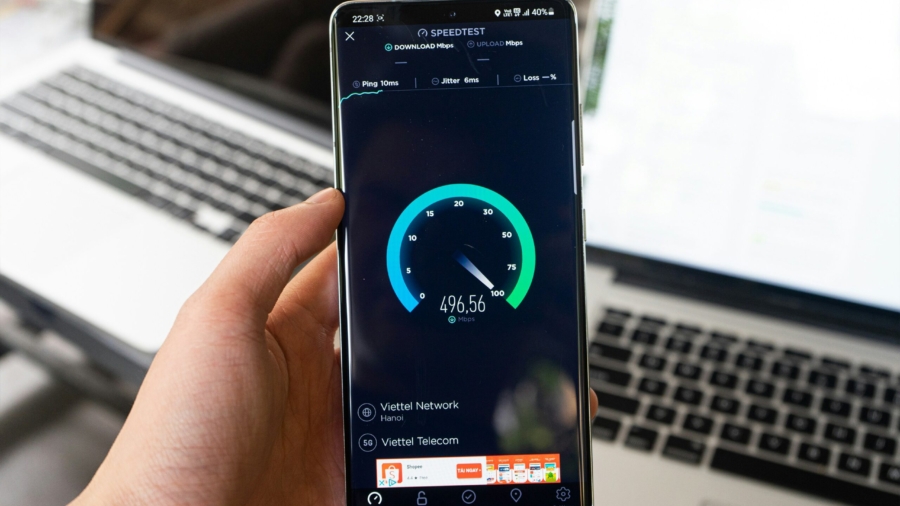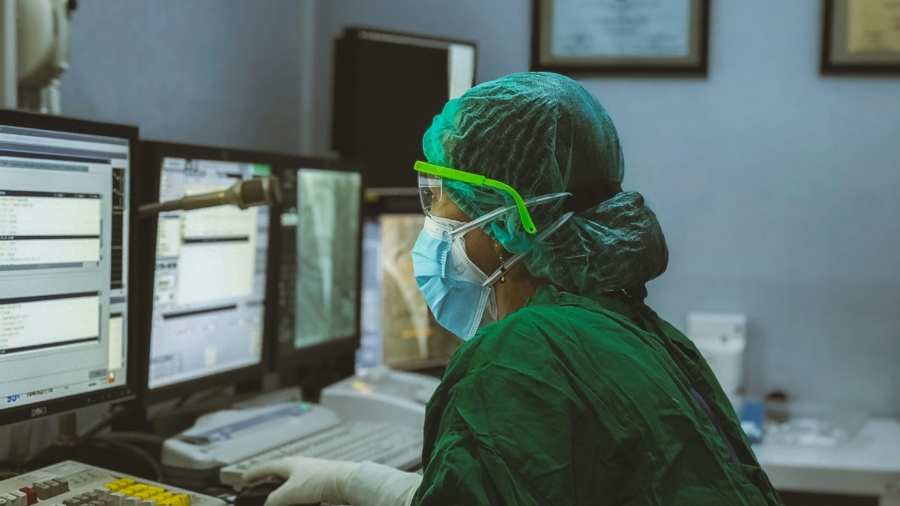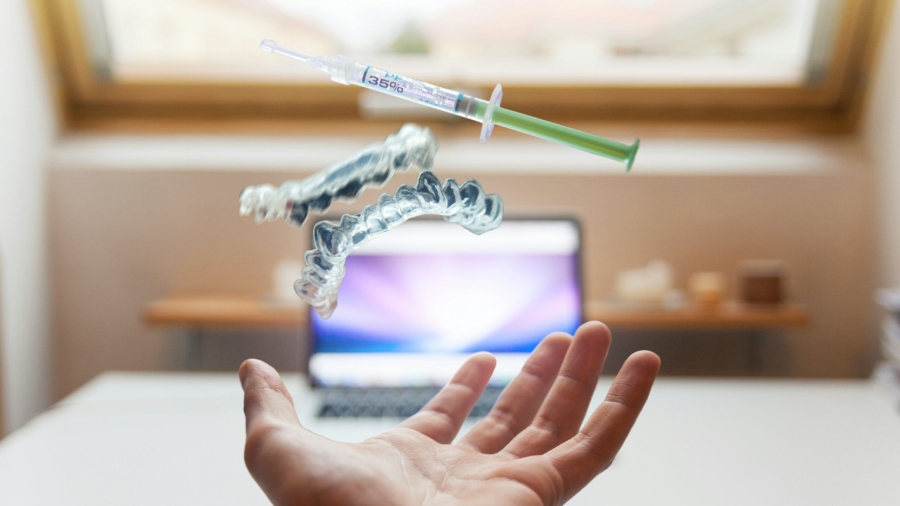Digital health records contain critical information about patients’ health, which can be used in harmful ways; therefore, protecting them from being breached is essential. Now some organizations are turning to blockchain technology to safeguard sensitive health data.
How does Blockchain work?
Blockchain is a decentralized digital ledger that records and encrypts transactions across a network. Each data is encrypted and linked in a chain making it more secure. Some advantages of this structure are as follows:
1- Decentralization
It means nodes are distributed to confuse attackers because there is no single point of attack.
2- Immutability
Once records are entered they cannot be altered. This ensures data integrity.
3- Encryption
Data is encrypted and can only be accessed by authorized persons.
How Blockchain Benefits in Healthcare
1- Enhance Security
Blockchain security with its cryptographic technique makes it almost impossible to hack and if someone does get unauthorized access then all other nodes will remain safe.
2- Patient’s Trust
Patients can view their data, revoke access, and share their details accordingly, which empowers patients to trust.
3- Standard Regulatory
Blockchain is transparent and it’s highly regulated to meet strict privacy guidelines like HIPAA and GDPR.
Use Cases of Blockchain in Healthcare
1- EHRs
Electronic Health Records that follow patients across the globe making sure not to duplicate data or have errors.
2- Testing
Blockchain goes under rigorous testing before being implemented in the healthcare system, thus promoting its integrity and reliability.
3- Supply Chain
Blockchain also manages the supply chain. Tracking pharmaceuticals from manufacturers to the patients, ensuring zero counterfeit drugs.
“Blockchain isn’t just about protecting data-it’s about empowering patients and enabling a more transparent, trustworthy healthcare system”
Dr. Lisa Taylor, a digital health expert
Blockchain is redefining the healthcare system with its robust data security. Some challenges need working like its expense in integrating with legacy systems etc. But with each day it’s improving from a market of $1.1 billion in 2021 to $5.7 billion in 2025 it’s accelerating its impact.
5G Internet: A Game-Changer for Healthcare
How crucial is the 5G Internet for the Health Sector?
The arrival of 5G is another milestone achieved through technology. It’s not just fast internet with near-zero latency, but it can also connect to hundreds of devices at once. 5G is transforming healthcare by providing new experiences like ultra-connectivity, fast tracking, remote accessibility etc.
5G a Game-Changer in the Health Sector
1- Ultra-Fast
5G is 100times faster than 4G, making it more useful for high-definition medical imagery and real-time video consultations.
2- Ultra-Low-Latency
With delays of approximately milliseconds, 5G is fastest for remote surgeries and conferences.
3- Ultra-Connectivity
With massive speed in GBs, its connectivity with other devices also increases with more reliability. A hospital where devices are connected and monitored, the response time is incredibly fast.
Innovations Possible through 5G in Healthcare
1- Remote Patient Monitoring
The wearable devices consistently monitor patients’ data and send it to other connected devices like servers. The doctors monitor it and can intervene for personalized care.
2- Telemedicine
With 5G, ultra-high-resolution telemedicine paved the way for patients with fewer payments, fast checkups and no traveling. The doctor does not need to visit patients in remote areas, traveling miles in person. They do not have to do that anymore.
3- Remote Surgery and Collaboration
By 2025, 753000 surgeries will be performed by robots and 400 surgeries by surgeons till now. This was only made possible through fast 5G. Another benefit is that medical students can watch live surgeries and gain surgical knowledge to implement them in the future.
4- Augmented Reality and Virtual Reality
AR and VR made medical training fast, like pain management, patient rehabilitation etc. Now medical students can watch trainings and patients can recover faster by innovative new AR and VR therapies.
“The network of the future is already being built as we speak. 5G is an important part of that. “The speed of technological developments that bring about countless new, smart opportunities to enrich our lives is unprecedented,” said Dr. Khalid Shafi, Healthcare Professional
5G is implemented in many hospitals, providing ultra-fast healthcare facilities. There is also hope for the arrival of 6G. Some countries like Japan, China and America are testing it, and it’s in its final stages. This will be a huge boost for every field. The future of medical science is written in real-time now.
Smartphone Can be Your Life Saver – Here’s How it Can Save Your Life!
A smartphone is more than just a device; it’s a companion for almost 4.88 billion people in the world. There are tremendous things that can be done using smartphones, such as vlogging, journalism, education, and so on. The most effective way to use it is for your healthcare. Let’s explore how you can use a smartphone as a life-saving device.
Life-Saving Tips:
1- Track vital health data (heartbeat, sleep timing, exercise routine)
2- Store emergency contacts and add them on speed dial.
3- Store emergency medical information
4- Connect your smartphone with a healthcare professional through telemedics.
5- Install healthcare apps to monitor your health anywhere in the world.
Some Top Health Apps in 2025:
Recent studies found that in about 75% of trauma cases where patients could not communicate properly, some medical emergency identification tools helped doctors. Some of the most powerful apps of this year are below. They offer unique features that help users to monitor their health in real time.
1- Strava
Social fitness tracking and route mapping app. Best for cyclists and social users.
2- MyFitnessPal
Nutrition and calorie tracking. For the user who cares about their diet and weight management.
3- Fitbit
Activity tracking, sleep rate, and health tracking. It’s beginner-friendly.
4- Headspace
For yoga and meditation. Best for stress relief and mental health.
5- Apple Fitness+
Workout routines feature integration with Apple Watch. For iPhone users only and best for home workouts.
How Can These Apps Save Lives?
1- Store emergency info and add a shortcut button press to dial it in critical situations. Like, a triple press of the power button will automatically dial and send your location to emergency services.
2- Healthcare monitoring through these apps will save time of traveling, and medical experts are available 24/7 on these apps.
3- Early warning and prevention systems in these apps will check symptoms, abnormal heart rates, reminders, etc., and notify you in real time.
“Smartphones are not just gadgets—they’re gateways to better health, offering tools that can empower, inform, and even save lives.”
Dr. Lisa Taylor, Health Expert
Smartphone is full of apps that can be life saving. Stay vigilant and use them properly, whether you track your health or use it for fitness or emergency services. Stay healthy, stay alert.
Telemedicine: Virtual Doctor at Your Service
Telemedicine a new word for most of the people but this word opened the door for new medical age. Reaching a doctor far away or providing medical assistance in remote areas is what a telemedicine means. Using a secure connection doctors can provide medical assistance anywhere in the world. This includes video calling, performing surgeries, monitoring devices, and so on.
New World of Virtual Care
The concept of telemedicine is boosting its market in 2025 and by 2026 its market will be around $175 billion. Medical experts are now attending more then ever online meeting and attend patients. In 2025 survey, virtual care is 38% higher then 2024.
Key Statistics
1# 37% of adults used telemedicine in the past year.
2# 80% of doctors now use telehealth in their practice.
3# Specialist wait times have dropped by 84%.
4# Rural patients have seen a 92% reduction in travel burdens.
5# Telehealth has delivered $42 billion in annual healthcare savings.
How Telemedicine is Helping?
1- Remote Access
Now doctor does not need to travel to rural or remote areas just for the routine checkups they can attend patients virtually. This also helps patients for instant diagnosis with delay.
2- Less Cost Better Results
An average patients saves more then $250 per visit. Virtual visit also reduce normal missed appointments by 60% and that saved time be of great help in emergency services.
3- Patients Satisfaction
Virtual meetings are flexible for both patients and doctors which increase there satisfaction level as well. They can schedule, reduced traveling and more personalized care for each patient.
“Telemedicine is not just convenience-It’s a lifeline for millions, making healthcare more equitable and responsive than ever before”
Dr. Lisa Taylor, A leading telehealth advocate.
Telemedicine offers great help for the patients in need of quick checkup but also there are few things that should be regulated such as data integrity, health records, maintaining regulation etc.
Top 10 AI-Driven Healthcare Achievements in 2025
The world is experiencing revolutionary change in the healthcare system in 2015. This change is limited to only gadgets, but it gives more accessibility and advanced disease diagnosis. Below are the top 10 healthcare achievements that the world has seen in 2025.
1. Diagnostic and Predictive Analytics using AI
Artificial intelligence is giving tremendous advantage to doctors and patients by early disease detection and treatment. AI and deep learning models are helping in developing gadgets and analyzing medical images like pathology results, breast cancer detection, etc. These AI-oriented healthcare systems spot the disease more accurately and suggest early treatments. For some cases, AI also suggests genetic-based treatments.
2. Telehealth and Virtual Care
Virtual doctors and surgeons performing surgeries from miles away. This is helping patients who live in remote areas unable to get proper health.
3. Wearable Health Tech
From health-tracking smartwatches to biosensors monitoring heart rate, hydration, etc. The gadget helps users to continuously monitor their health without going to the doctor every day.
4. Internet of Medical Things (IoMT)
You may have heard of the Internet of Things (IoT). This IoMT also has similar concepts, but its field is different. IoMT connects devices, sensors, and the cloud, enabling them to communicate among machines for proper output with human guidance.
5. AI-Driven Medicine
AI enabled doctors to design specific medicine for specific patients. These drugs are designed by monitoring patients previous health history and genetics, and then AI suggests therapies and drugs according to patients genetics.
6. Robotic Surgeries
The health industry also covered another mile with automation. Robots are now performing surgeries that are difficult for human surgeons. For instance, Elon Musk’s company Neuralink is planting AI chips in paralyzed patients heads, which enables them to move their bodies and speak through computers.
7. Smart Home Medical Devices
Many medical devices, like blood pressure monitors, smart thermometers, and portable oxygen concentrators, are making life easier for patients, and they can connect them with health apps. These health apps help them continuously monitor their health by professionals.
8. Mental Health AI Tech
AI-driven therapies and virtual reality treatments are helping more and more patients with specific health needs. These tools assist patients in countering anger, anxiety, and depression.
9. Blockchain for Healthcare System Data Security
New AI blockchain systems are designed to ensure data security. These systems ensure a sophisticated data approach.
10. Agentic AI System
This is the new role of the healthcare system, where they not only assist patients but also autonomously monitor patients’s health to adjust their treatment according to them. This will help in a proactive approach; without delay, the treatment will be given to the patient.
“Healthcare technology is evolving at an incredible pace, and as we step into 2025, we’re witnessing innovations that were once the stuff of science fiction.”




